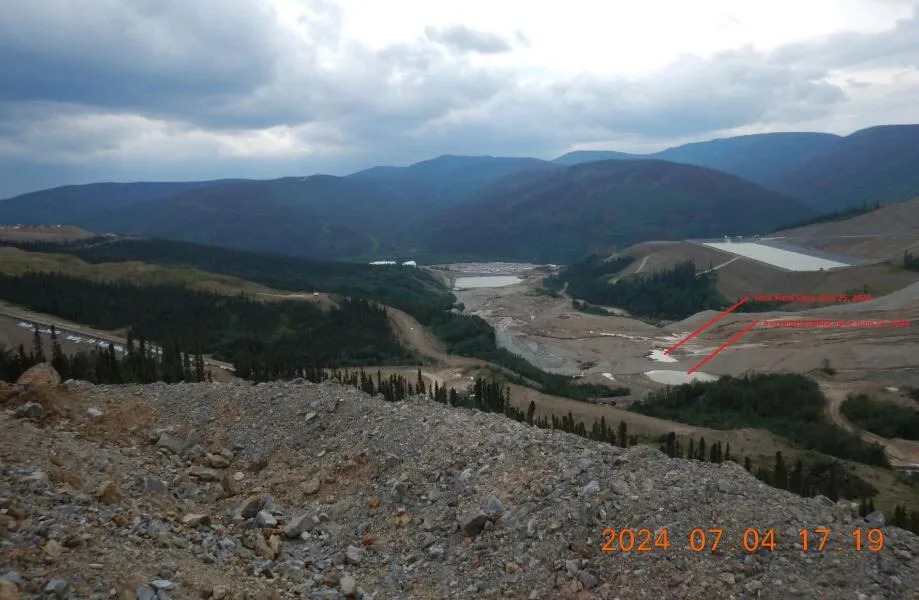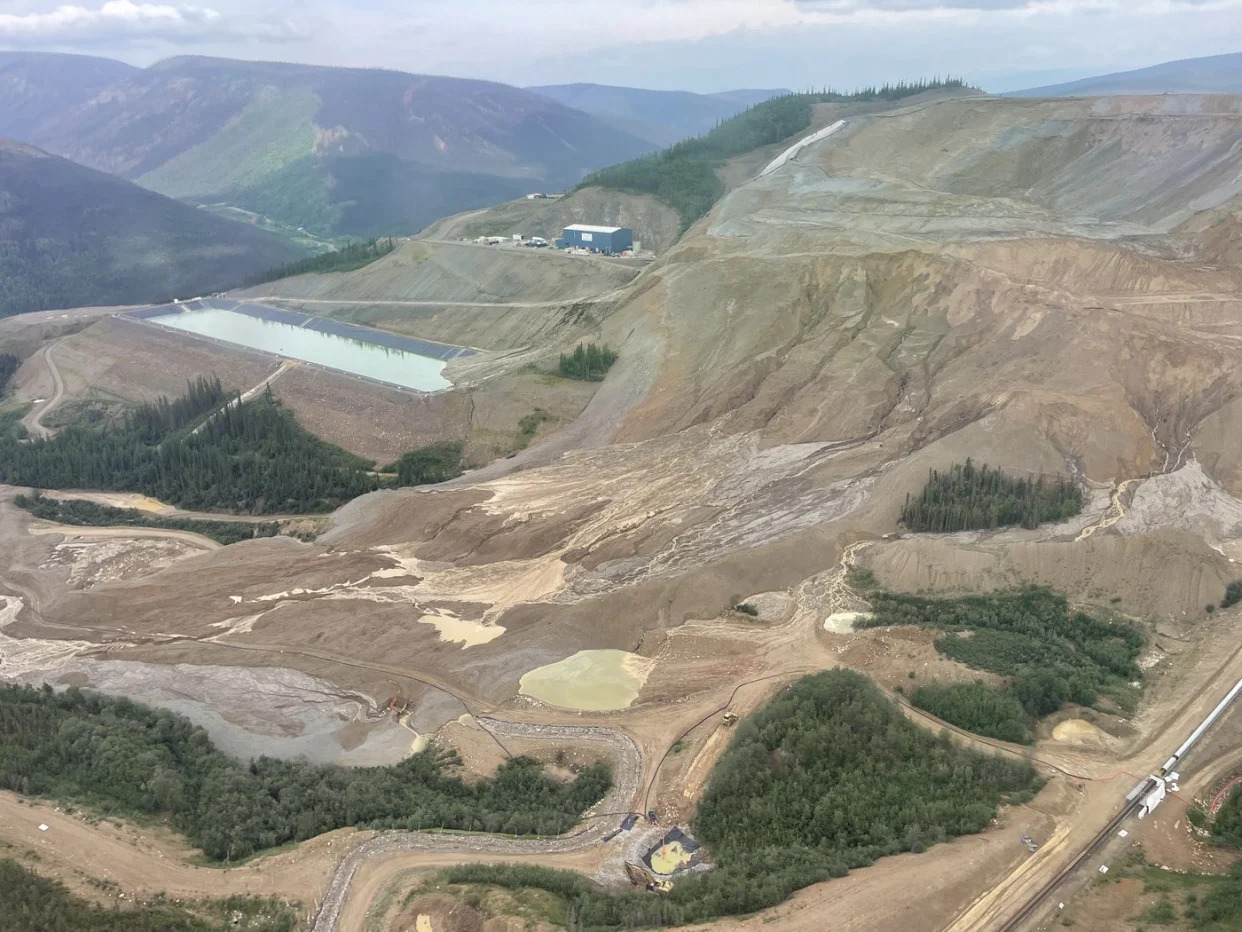CBC
Fri, August 30, 2024

A photo from July 4, 2024, and included in a Yukon government inspection report, shows the accumulation of displaced material from the heap leach pad at Victoria Gold's Eagle mine in the Yukon, after the catastrophic slide in June . Red arrows point to pooling of in heap water and process solution. (Yukon government - image credit)
The Yukon government has appointed a trio of experts to look into the cause and factors behind the heap leach failure at Victoria Gold's Eagle mine earlier this summer.
The three-person independent review board is tasked with figuring out what led to the June 24 slide, which spilled hundreds of millions of litres of cyanide solution into the environment and forced the immediate halt of operations at the mine site.
The review is part of Yukon's response to the "catastrophic failure and its impact on the environment and human health and safety," the government said in a news release on Friday afternoon.
The review will look at the design, construction, operation, maintenance and monitoring of the heap leach facility. Heap leaching is a method of extracting gold from stacked layers of ore using a cyanide solution.
"Understanding the causes of the failure will help inform remediation of the failure, possible options for a future restart of mine operations at Eagle Gold, as well as other future operations in the Yukon," the release states.
The review is expected to take six to eight months and the results will be made public, the government says. It's being funded through the receivership of Victoria Gold.
The three members appointed to the board are:
Jean-Marie Konrad, a geotechnical expert who has consulted for projects related to things such as permafrost engineering and dam construction.
Les Sawatsky, a senior civil engineer with experience in mine development and closure planning, reclamation, and tailings management.
Mark E. Smith, an engineer with experience in gold heap leaching, including several cold-climate projects.
The government says the First Nation of Na-Cho Nyäk Dun has an "open invitation to join the Independent Review Board process at any time."
Mines Minister John Streicker was not available for comment on Friday but in a written statement he said his government "recognizes the seriousness of the heap leach failure."
"The Independent Review Board is the most expedient process for determining the causes of the heap leach facility failure and will lead to changes that will help to prevent another event like this one from occurring in the future," Streicker's statement reads.
The First Nation of Na-Cho Nyäk Dun, on whose traditional territory the Eagle Gold mine is located, has previously expressed concerns with the review process. In a letter to deputy mines minister Laura Haney this week, which the First Nation shared with media, executive director McGarry Selbee wrote that draft terms of reference seemed to "erase" the First Nation's role, and that it would only support a co-managed review.
Echoing earlier letters from Na-Cho Nyäk Dun Chief Dawna Hope, Selbee also argued that a review would not be able to fully canvass long-standing systemic issues that may have contributed to the "single greatest failure of mining infrastructure in Yukon's history." He demanded that the government also commit to a public inquiry, a separate legislative process he argued would have a wider scope and give investigators more power.
The First Nation did not immediately respond to a request for comment Friday.
Yukon First Nation fears exclusion from mine disaster review, seeks public inquiry
The Canadian Press
Thu, August 29, 2024

Yukon's Na-Cho Nyak Dun First Nation says an independent review of a disaster at the Eagle Gold mine on its territory is urgently needed but it has serious concerns the Yukon government is trying to "erase" its role in the probe.
The First Nation says in a letter to deputy mining minister Lauren Haney that it wants to hash out "effective parameters" for the investigation into the failure of the mine's heap leaching pad that released millions of tonnes of cyanide-laced ore in June.
It says an independent review board can't get to the bottom of the disaster, calling instead for a full public inquiry.
The First Nation says it will only support the review board's work if it can "co-manage" the process and appoint it's own advisors to work alongside those tapped by the Yukon government.
The letter to Haney on Tuesday says the mine "was a steady regulatory blight from its inception to its collapse," detailing past cyanide spills, problems found by inspectors, landslides and water management issues.
The Yukon government did not immediately respond to a request for comment on the First Nation's letter.
Mine owner Victoria Gold is now in receivership and the site is under the receiver's management.
The First Nation says the Yukon government's enforcement response to past incidents at the mine is "unclear."
"There is therefore a much larger story to the June 24 Eagle Gold disaster than a mere accident, technical anomaly, or isolated instance of oversight," the letter said.
It added: "The consequence of allowing business-as-usual at an unsafe and unsound site now hangs over taxpayers’ heads."
This report by The Canadian Press was first published Aug. 29, 2024.
No comments:
Post a Comment